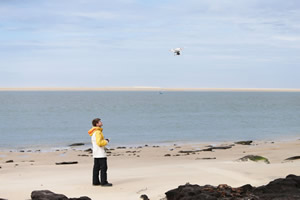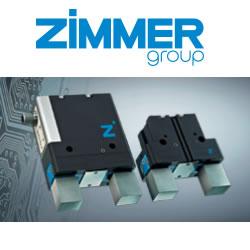Teaching Drones How To Crash Safely
 Simon Parkin for MIT Technology Review: A husband and wife team believe they have the solution to one of the biggest hurdles to drone package delivery.
Simon Parkin for MIT Technology Review: A husband and wife team believe they have the solution to one of the biggest hurdles to drone package delivery.
Most unmanned aerial vehicles aren’t unmanned at all. By law in the U.S., a dedicated pilot must maintain a line of sight to the vehicle in order to ensure safe operation. This setup is untenable for the large-scale rollout of drone fleets, such as those planned by Amazon to handle customer deliveries in urban areas, or for public service missions involving scanning for forest fires, search and rescue operations, or shark surveillance.
Lou Glaab, an aerospace technologist and NASA researcher, and his wife, Trish Glaab, a software engineer, have developed a system that they believe solves the problem. Safe2Ditch is a package of software algorithms and logic that resides within the vehicle either as in a small separate flight computer or an integrated mode in an autopilot. In the event of a mechanical failure, or a drained battery, Safe2Ditch will enable the vehicle to land safely, mitigating the risk of injury to people in urban and suburban areas.
It’s technology that the Glaabs believe will help companies make the case to the U.S. Federal Aviation Administration, which regulates all aspects of civil aviation, that these vehicles can operate autonomously and safely in the vicinity of homes and crowds. Full Article:
Featured Product

